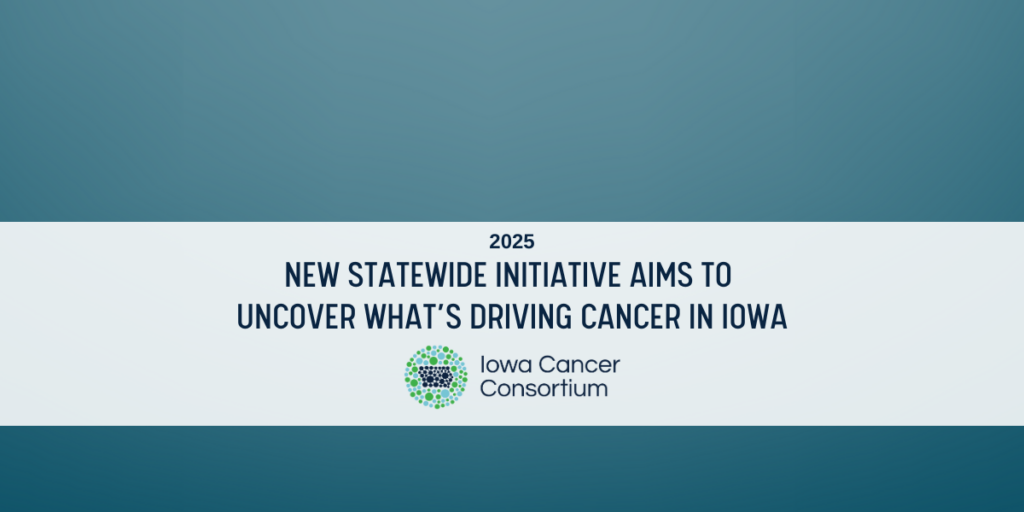New Statewide Initiative Aims to Uncover What’s Driving Cancer in Iowa

In response to rising cancer rates across the state, Iowa leaders have launched an initiative to better understand and address the factors contributing to cancer in Iowa. The project, known as Cancer Drivers in Iowa, is a collaborative effort between Iowa Health and Human Services and the University of Iowa College of Public Health, established through Senate File 647. The project aims to uncover the complex factors contributing to the state’s elevated cancer rates and recommend strategies to reduce them.
Why This Matters
Cancer is a growing concern in Iowa:
· More than 1 in 20 Iowans have experienced a diagnosis of cancer.
· Iowa has the 2nd highest rate of new cancer cases in the United States.
· Rates of prostate, breast, and melanoma cancers are rising.
· Iowa has one of the fastest rising rates of melanoma in the U.S.
· The state has the highest rate of oropharyngeal cancer (linked to HPV) in the country.
· While lung and colorectal cancer rates are declining, they are declining more slowly than in other states, and remain higher than most.
Understanding the Puzzle
“Cancer is like a puzzle. No single factor causes it. But when multiple pieces—such as tobacco use, environmental exposures, and inherited traits—come together, the risk increases.
The Cancer Drivers in Iowa initiative seeks to identify the behavioral factors: such as smoking, alcohol consumption, and diet; the environmental exposures: including radon, arsenic, and ultraviolet light; and the genetic predispositions: inherited traits that increase susceptibility. By studying these interconnected factors, researchers hope to determine the most influential drivers of cancer in Iowa and guide evidence-based prevention efforts.
Key Activities of the Project
· Map cancer across the state: Focus on the six most common cancers—prostate, breast, melanoma, lung, colorectal, and HPV-related—to identify geographic areas that have higher rates than expected.
· Study prostate screening: Investigate whether variations in screening guidelines among healthcare providers are influencing prostate cancer rates.
· Understand data gaps: Assess existing data sources and identify missing information that hinders effective cancer prevention.
· Review successful programs in other states: Learn from states with similar risk profiles to identify promising interventions.
· Inform policy: Use findings to guide evidence-informed public health policies and strategies.
The Cancer Drivers in Iowa project faces several important limitations that affect its ability to fully explain the causes behind the state’s elevated cancer rates. One major constraint is that there is not a data source that collects all the needed information to link cancer diagnosis to specific causes. For example, the Iowa Cancer Registry, is a comprehensive key data source for the initiative, but the data collected does not include individual risk factors such as personal behaviors or environmental exposures or data from before someone is diagnosed with cancer. This means that researchers cannot directly link cancer diagnoses to specific causes. Additionally, cancer is inherently complex, often resulting from a combination of genetic, behavioral, and environmental factors interacting over time. Many cancers take decades to develop, making it difficult to accurately assess past exposures. These challenges are compounded by critical data gaps about effective cancer prevention efforts. Identifying and addressing these gaps is a central goal of the project, but until more comprehensive data is available, the ability to draw definitive conclusions remains limited.
Conclusion
Understanding what drives cancer in Iowa is more than an academic exercise—it’s a public health imperative. By identifying high-risk areas and uncovering the causes behind Iowa’s elevated cancer rates, the Cancer Drivers in Iowa project will empower communities, healthcare providers, and policymakers to take targeted, informed action.
